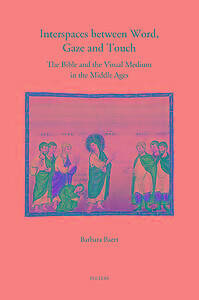
- Retrait gratuit dans votre magasin Club
- 7.000.000 titres dans notre catalogue
- Payer en toute sécurité
- Toujours un magasin près de chez vous
- Retrait gratuit dans votre magasin Club
- 7.000.0000 titres dans notre catalogue
- Payer en toute sécurité
- Toujours un magasin près de chez vous
Interspaces Between Word, Gaze and Touch
The Bible and the Visual Medium in the Middle Ages. Collected Essays on Noli Me Tangere, the Woman with the Haemorrhage, the Head of John the Baptist
B Baert
48,00 €
+ 96 points
Description
To understand the origins, spread and changing functions of images in Christianity requires an interdisciplinary approach. This book will explore the limits and possibilities of such an approach, against the background of current methodological developments. The rise of visual studies and the re-evaluation of anthropology have contributed to a favourable climate for interdisciplinary research in the humanities. With regard to the Bible and the Visual Medium, the basic focus this book is concerned with, a strong new pact has been forged between Theology and Art History. Carefully calibrated methodologies have been developed to unite the world of the word and the world of the visual medium as a truly interdisciplinary research object. Historical-critical exegesis, church history, iconology and cultural anthropology together provide foundational support for knowledge of broader visual themes, and the functions of works of art. In their interplay they become the gateway to the Interspaces of word, gaze and touch. The three chapters of this book plumb the interspaces between the world of texts (word), images (gaze) and sensation (touch). The choice of the three themes was carefully considered. They provide an optimal means of testing the strengths and limitations of the most recent interdisciplinary research in the study of the Bible and the visual medium. Furthermore, they take on exceptional forms at the intersection of the interspaces. Finally, each of the themes is anchored in a particular biblical phrase, which sealed its most influential pact between word an image, and gave rise to impressive visual traditions within Christianity: Do not touch me (John 20:17), Who touched my clothes? (Mark 5:30), He must increase, but I must decrease (John 3:30).
Spécifications
Parties prenantes
- Auteur(s) :
- Editeur:
Contenu
- Nombre de pages :
- 154
- Langue:
- Anglais
- Collection :
- Tome:
- n° 62
Caractéristiques
- EAN:
- 9789042923997
- Date de parution :
- 07-04-11
- Format:
- Livre broché
- Format numérique:
- Trade paperback (VS)
- Dimensions :
- 157 mm x 239 mm
- Poids :
- 294 g

Les avis
Nous publions uniquement les avis qui respectent les conditions requises. Consultez nos conditions pour les avis.






